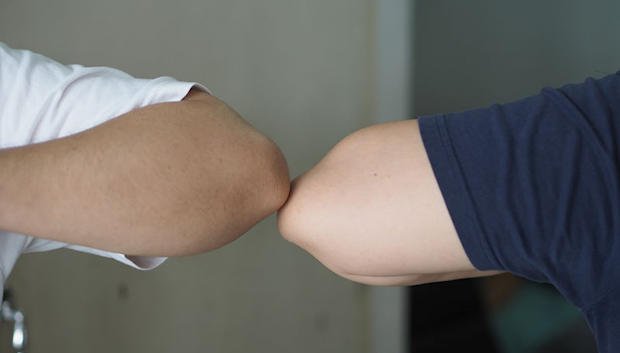Today I’m sharing with you a recent revelation, based on a conversation with my friend, Grace. It’s H-U-U-G-E! With just a slight shift in thinking and approach, it can be used to manage our lives in the midst of this pandemic, our dreams for what’s to come post-pandemic, and even more so (and far more appropriate to this blog) our advocacy and care management practices.
We’ve Been Selling Peace of Mind
What the smartest independent advocates among us understand is that when a prospective client calls to inquire about our services, they aren’t really asking about what services we provide. They don’t “buy” things like “care coordination” or “finding the right doctor” or “negotiating medical bills”. They may not even realize those are the services they need.
Instead, what they REALLY seek is peace-of-mind, far more important to them than specific services. They call because they are FUDGE (fearful, uncertain, doubtful, feeling guilty, or exhausted) and when we focus on alleviating their FUDGE by providing peace-of-mind, THAT is when they realize we can help them, and why they want to open their wallets to let us in.
Beyond Peace of Mind
The grand revelation in my conversation with Grace produced a profound nuance to that concept.
That is, that what most patients REALLY want goes even beyond peace-of-mind. What they really want is a return to “normal”.
But what exactly IS normal?
Normal is different for everyone, of course. I define it here as whatever life looked like before we began dealing with whatever we are dealing with today. “Normal” always represents what was better in the past. To our clients, “normal” is represented by life before they were diagnosed, or had their accident, or became debilitated, or got those high bills, or whatever the reason they called us to begin with.
 We personally understand normal through these examples:
We personally understand normal through these examples:
- Normal was when we actually shook hands or hugged to greet someone.
- When your car breaks down, your mechanic relieves your FUDGE by providing the peace-of-mind that it can be fixed. But the normal you really want is for your perfectly running car to be parked in your garage ready for you to drive it.
- We want more than peace-of-mind that the pandemic no longer threatens ourselves and our loved ones. We want our kids to once again experience “normal” by returning full time to school. We want to spend holidays together and feel safe like we used to. We want to run our advocacy practices without regard to whether we can safely visit someone in person.
How Normal Affects Our Advocacy
My revelation from Grace’s comment is about how we, as independent advocates, should begin using this concept of “normal” with our clients to improve their understanding of how we help, and their understanding of outcomes. Examples:
- In a conversation with a potential new client, when you say “What I hear, Mr. Robinson, is that you wish things could just go back to normal,” then Mr. Robinson immediately knows you understand how he feels. Now he can’t wait to hire you.
- A spouse or partner dies suddenly, and a client is left to take care of, fend for, and handle everything himself while dealing with his grief and lamenting his loss of normal, before he lost his wife. He may turn to you to help.
- During your client’s doctor appointment, you explain, “Doctor – Mrs. Frederick just wants you to suggest treatment that will relieve her pain so she can feel “normal” again.” The doctor understands and can explain potential outcomes further. Mrs. Frederick is glad she brought you along to the appointment.
- A client is diagnosed with a life-altering, debilitating disease (think MS, ALS, Parkinsons, others). Beyond dealing with a new life focused on difficult therapies and coping with disabilities, she craves her old “normal'” which, sadly, she may never achieve even when she turns to you for help.
- Other scenarios will lend themselves to this concept perfectly. I’m sure you can think of a dozen conversations you have had with clients when “normal” was really the point, even when it went unspoken.
Caveat: “Normal” Evolves
 Rarely is normal exactly what the previous normal used to be. A return to “normal” may not even be possible. If a loved one has died, there is no possibility of bringing him/her back. A debilitating diagnosis doesn’t bode well for an old normal.
Rarely is normal exactly what the previous normal used to be. A return to “normal” may not even be possible. If a loved one has died, there is no possibility of bringing him/her back. A debilitating diagnosis doesn’t bode well for an old normal.
Instead, and especially as advocates, we must help clients understand that “normal” evolves.
- Old Normal was what it was, and may even be somewhat glorified beyond what it was. We shook hands when we met someone.
- New Normal will always be a blend of the old and the new, even if it’s not exactly what we wish for or were used to. We bump elbows or fists.
So we shift our thinking and adapt our language to focus on the positive parts of normal we can work toward; the proactive creation and development of a new and improved normal; at least improved over the situation that currently exists. In such a case, for a client, you might manage expectations about what that replacement “new” normal looks like, and all the ways you, as their advocate, can help accomplish that. The client who lost a partner can begin to appreciate a new normal if she has someone who checks in on her each day and helps out with some cleaning and cooking. The client with an outrageous medical bill appreciates that you’ll negotiate it for him, allowing his life to return to the normal of not worrying about it any longer. The client with a life-altering diagnosis knows he must learn to live with increasing debilitation, and appreciates that someone is helping him figure out how to live his changing normal.
Every approach provides peace-of-mind – the peace-of-mind that you are helping them to establish an acceptable, perhaps even more positive new normal.
An Advocate’s New Normal
And so it is with advocacy. We’ve made lots of adjustments over the past pandemic year! Our normals have shifted considerably. And while many of us have wished our practices and our clients could return to “normal” we do recognize that we will all deal with a new normal. We’ll never really get back exactly the ease of public life we had prior to the pandemic. Lives, jobs, freedoms, even handshakes have all been lost.
So as we recognize how our own lives will improve as we begin to embrace our new normals, let’s also focus on the very specific ways we can use that concept as we help our clients find their new normals, too.

That begins with making “normal” – and what a new normal looks like – a part of the conversation.
(Thanks for the inspiration, Grace!)
LEARN ABOUT APHA MEMBERSHIP | REASONS PATIENTS NEED ADVOCATES | MASTER LIST OF PRACTICE RESOURCES






Good points. Yes, getting back to normal is a goal, but it might be a ‘new normal’. These are also good indicators that advocates and other helping professionals (care managers) can use to highlight the outcomes they can achieve when they are invovled.